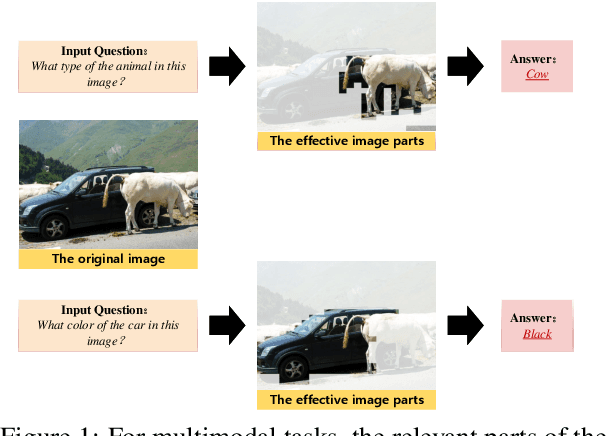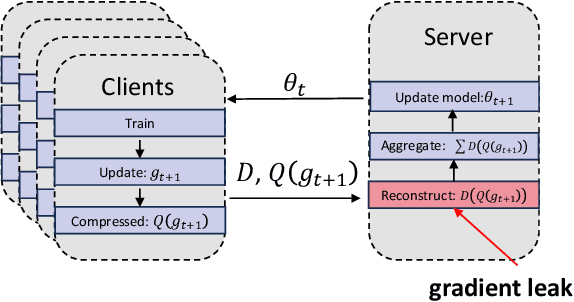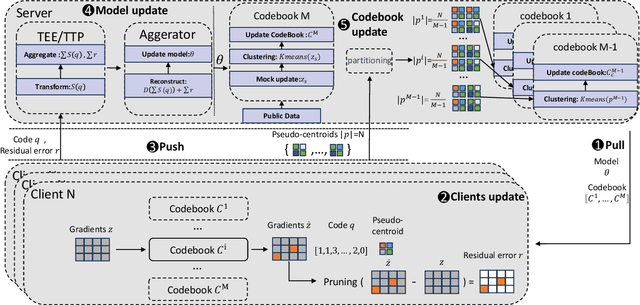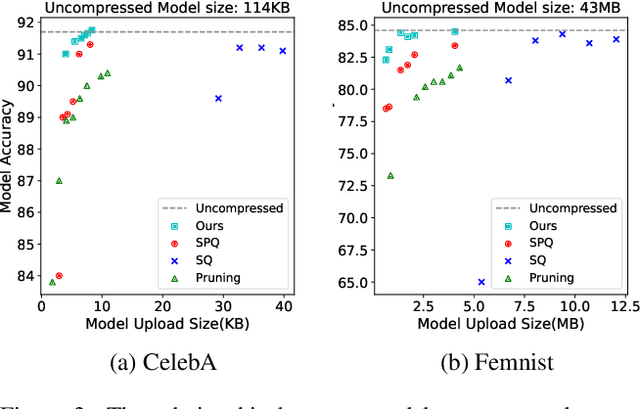Zhuo Tang
Self-Supervised Point Cloud Completion based on Multi-View Augmentations of Single Partial Point Cloud
Sep 26, 2025Abstract:Point cloud completion aims to reconstruct complete shapes from partial observations. Although current methods have achieved remarkable performance, they still have some limitations: Supervised methods heavily rely on ground truth, which limits their generalization to real-world datasets due to the synthetic-to-real domain gap. Unsupervised methods require complete point clouds to compose unpaired training data, and weakly-supervised methods need multi-view observations of the object. Existing self-supervised methods frequently produce unsatisfactory predictions due to the limited capabilities of their self-supervised signals. To overcome these challenges, we propose a novel self-supervised point cloud completion method. We design a set of novel self-supervised signals based on multi-view augmentations of the single partial point cloud. Additionally, to enhance the model's learning ability, we first incorporate Mamba into self-supervised point cloud completion task, encouraging the model to generate point clouds with better quality. Experiments on synthetic and real-world datasets demonstrate that our method achieves state-of-the-art results.
Enhancing Small-Scale Dataset Expansion with Triplet-Connection-based Sample Re-Weighting
Aug 11, 2025Abstract:The performance of computer vision models in certain real-world applications, such as medical diagnosis, is often limited by the scarcity of available images. Expanding datasets using pre-trained generative models is an effective solution. However, due to the uncontrollable generation process and the ambiguity of natural language, noisy images may be generated. Re-weighting is an effective way to address this issue by assigning low weights to such noisy images. We first theoretically analyze three types of supervision for the generated images. Based on the theoretical analysis, we develop TriReWeight, a triplet-connection-based sample re-weighting method to enhance generative data augmentation. Theoretically, TriReWeight can be integrated with any generative data augmentation methods and never downgrade their performance. Moreover, its generalization approaches the optimal in the order $O(\sqrt{d\ln (n)/n})$. Our experiments validate the correctness of the theoretical analysis and demonstrate that our method outperforms the existing SOTA methods by $7.9\%$ on average over six natural image datasets and by $3.4\%$ on average over three medical datasets. We also experimentally validate that our method can enhance the performance of different generative data augmentation methods.
Interactive Hybrid Rice Breeding with Parametric Dual Projection
Jul 16, 2025Abstract:Hybrid rice breeding crossbreeds different rice lines and cultivates the resulting hybrids in fields to select those with desirable agronomic traits, such as higher yields. Recently, genomic selection has emerged as an efficient way for hybrid rice breeding. It predicts the traits of hybrids based on their genes, which helps exclude many undesired hybrids, largely reducing the workload of field cultivation. However, due to the limited accuracy of genomic prediction models, breeders still need to combine their experience with the models to identify regulatory genes that control traits and select hybrids, which remains a time-consuming process. To ease this process, in this paper, we proposed a visual analysis method to facilitate interactive hybrid rice breeding. Regulatory gene identification and hybrid selection naturally ensemble a dual-analysis task. Therefore, we developed a parametric dual projection method with theoretical guarantees to facilitate interactive dual analysis. Based on this dual projection method, we further developed a gene visualization and a hybrid visualization to verify the identified regulatory genes and hybrids. The effectiveness of our method is demonstrated through the quantitative evaluation of the parametric dual projection method, identified regulatory genes and desired hybrids in the case study, and positive feedback from breeders.
VLScene: Vision-Language Guidance Distillation for Camera-Based 3D Semantic Scene Completion
Mar 08, 2025Abstract:Camera-based 3D semantic scene completion (SSC) provides dense geometric and semantic perception for autonomous driving. However, images provide limited information making the model susceptible to geometric ambiguity caused by occlusion and perspective distortion. Existing methods often lack explicit semantic modeling between objects, limiting their perception of 3D semantic context. To address these challenges, we propose a novel method VLScene: Vision-Language Guidance Distillation for Camera-based 3D Semantic Scene Completion. The key insight is to use the vision-language model to introduce high-level semantic priors to provide the object spatial context required for 3D scene understanding. Specifically, we design a vision-language guidance distillation process to enhance image features, which can effectively capture semantic knowledge from the surrounding environment and improve spatial context reasoning. In addition, we introduce a geometric-semantic sparse awareness mechanism to propagate geometric structures in the neighborhood and enhance semantic information through contextual sparse interactions. Experimental results demonstrate that VLScene achieves rank-1st performance on challenging benchmarks--SemanticKITTI and SSCBench-KITTI-360, yielding remarkably mIoU scores of 17.52 and 19.10, respectively.
Vision-based 3D Semantic Scene Completion via Capture Dynamic Representations
Mar 08, 2025Abstract:The vision-based semantic scene completion task aims to predict dense geometric and semantic 3D scene representations from 2D images. However, the presence of dynamic objects in the scene seriously affects the accuracy of the model inferring 3D structures from 2D images. Existing methods simply stack multiple frames of image input to increase dense scene semantic information, but ignore the fact that dynamic objects and non-texture areas violate multi-view consistency and matching reliability. To address these issues, we propose a novel method, CDScene: Vision-based Robust Semantic Scene Completion via Capturing Dynamic Representations. First, we leverage a multimodal large-scale model to extract 2D explicit semantics and align them into 3D space. Second, we exploit the characteristics of monocular and stereo depth to decouple scene information into dynamic and static features. The dynamic features contain structural relationships around dynamic objects, and the static features contain dense contextual spatial information. Finally, we design a dynamic-static adaptive fusion module to effectively extract and aggregate complementary features, achieving robust and accurate semantic scene completion in autonomous driving scenarios. Extensive experimental results on the SemanticKITTI, SSCBench-KITTI360, and SemanticKITTI-C datasets demonstrate the superiority and robustness of CDScene over existing state-of-the-art methods.
Learning Temporal 3D Semantic Scene Completion via Optical Flow Guidance
Feb 20, 2025Abstract:3D Semantic Scene Completion (SSC) provides comprehensive scene geometry and semantics for autonomous driving perception, which is crucial for enabling accurate and reliable decision-making. However, existing SSC methods are limited to capturing sparse information from the current frame or naively stacking multi-frame temporal features, thereby failing to acquire effective scene context. These approaches ignore critical motion dynamics and struggle to achieve temporal consistency. To address the above challenges, we propose a novel temporal SSC method FlowScene: Learning Temporal 3D Semantic Scene Completion via Optical Flow Guidance. By leveraging optical flow, FlowScene can integrate motion, different viewpoints, occlusions, and other contextual cues, thereby significantly improving the accuracy of 3D scene completion. Specifically, our framework introduces two key components: (1) a Flow-Guided Temporal Aggregation module that aligns and aggregates temporal features using optical flow, capturing motion-aware context and deformable structures; and (2) an Occlusion-Guided Voxel Refinement module that injects occlusion masks and temporally aggregated features into 3D voxel space, adaptively refining voxel representations for explicit geometric modeling. Experimental results demonstrate that FlowScene achieves state-of-the-art performance on the SemanticKITTI and SSCBench-KITTI-360 benchmarks.
Human-Guided Image Generation for Expanding Small-Scale Training Image Datasets
Dec 24, 2024



Abstract:The performance of computer vision models in certain real-world applications (e.g., rare wildlife observation) is limited by the small number of available images. Expanding datasets using pre-trained generative models is an effective way to address this limitation. However, since the automatic generation process is uncontrollable, the generated images are usually limited in diversity, and some of them are undesired. In this paper, we propose a human-guided image generation method for more controllable dataset expansion. We develop a multi-modal projection method with theoretical guarantees to facilitate the exploration of both the original and generated images. Based on the exploration, users refine the prompts and re-generate images for better performance. Since directly refining the prompts is challenging for novice users, we develop a sample-level prompt refinement method to make it easier. With this method, users only need to provide sample-level feedback (e.g., which samples are undesired) to obtain better prompts. The effectiveness of our method is demonstrated through the quantitative evaluation of the multi-modal projection method, improved model performance in the case study for both classification and object detection tasks, and positive feedback from the experts.
Retrieval Replace Reduction: An effective visual token reduction method via semantic match
Oct 09, 2024



Abstract:Multimodal large language models (MLLMs) have demonstrated strong performance across various tasks without requiring training from scratch. However, they face significant computational and memory constraints, particularly when processing multimodal inputs that exceed context length, limiting their scalability. In this paper, we introduce a new approach, \textbf{TRSM} (\textbf{T}oken \textbf{R}eduction via \textbf{S}emantic \textbf{M}atch), which effectively reduces the number of visual tokens without compromising MLLM performance. Inspired by how humans process multimodal tasks, TRSM leverages semantic information from one modality to match relevant semantics in another, reducing the number of visual tokens.Specifically, to retain task relevant visual tokens, we use the text prompt as a query vector to retrieve the most similar vectors from the visual prompt and merge them with the text tokens. Based on experimental results, when applied to LLaVA-1.5\cite{liu2023}, our approach compresses the visual tokens by 20\%, achieving comparable performance across diverse visual question-answering and reasoning tasks.
FedMPQ: Secure and Communication-Efficient Federated Learning with Multi-codebook Product Quantization
Apr 21, 2024



Abstract:In federated learning, particularly in cross-device scenarios, secure aggregation has recently gained popularity as it effectively defends against inference attacks by malicious aggregators. However, secure aggregation often requires additional communication overhead and can impede the convergence rate of the global model, which is particularly challenging in wireless network environments with extremely limited bandwidth. Therefore, achieving efficient communication compression under the premise of secure aggregation presents a highly challenging and valuable problem. In this work, we propose a novel uplink communication compression method for federated learning, named FedMPQ, which is based on multi shared codebook product quantization.Specifically, we utilize updates from the previous round to generate sufficiently robust codebooks. Secure aggregation is then achieved through trusted execution environments (TEE) or a trusted third party (TTP).In contrast to previous works, our approach exhibits greater robustness in scenarios where data is not independently and identically distributed (non-IID) and there is a lack of sufficient public data. The experiments conducted on the LEAF dataset demonstrate that our proposed method achieves 99% of the baseline's final accuracy, while reducing uplink communications by 90-95%
Machine unlearning through fine-grained model parameters perturbation
Jan 09, 2024Abstract:Machine unlearning techniques, which involve retracting data records and reducing influence of said data on trained models, help with the user privacy protection objective but incur significant computational costs. Weight perturbation-based unlearning is a general approach, but it typically involves globally modifying the parameters. We propose fine-grained Top-K and Random-k parameters perturbed inexact machine unlearning strategies that address the privacy needs while keeping the computational costs tractable. In order to demonstrate the efficacy of our strategies we also tackle the challenge of evaluating the effectiveness of machine unlearning by considering the model's generalization performance across both unlearning and remaining data. To better assess the unlearning effect and model generalization, we propose novel metrics, namely, the forgetting rate and memory retention rate. However, for inexact machine unlearning, current metrics are inadequate in quantifying the degree of forgetting that occurs after unlearning strategies are applied. To address this, we introduce SPD-GAN, which subtly perturbs the distribution of data targeted for unlearning. Then, we evaluate the degree of unlearning by measuring the performance difference of the models on the perturbed unlearning data before and after the unlearning process. By implementing these innovative techniques and metrics, we achieve computationally efficacious privacy protection in machine learning applications without significant sacrifice of model performance. Furthermore, this approach provides a novel method for evaluating the degree of unlearning.
 Add to Chrome
Add to Chrome Add to Firefox
Add to Firefox Add to Edge
Add to Edge